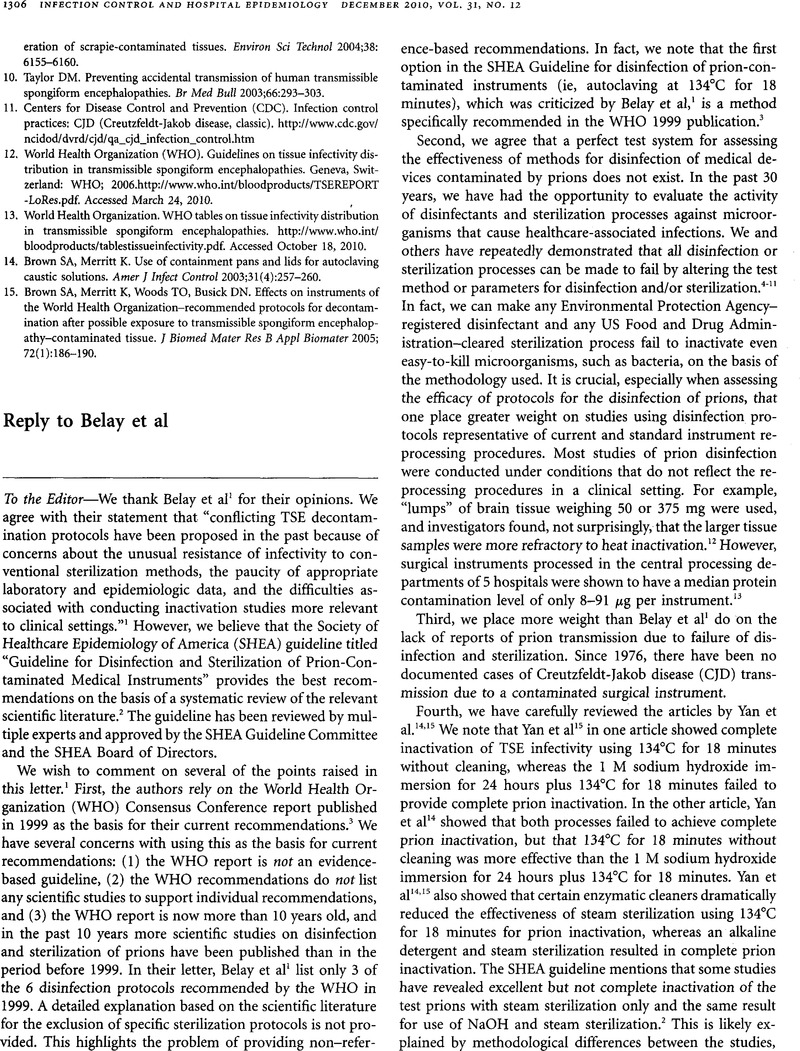Crossref Citations
This article has been cited by the following publications. This list is generated based on data provided by Crossref.
Belay, Ermias D.
Blase, Jennifer
Sehulster, Lynne M.
Maddox, Ryan A.
and
Schonberger, Lawrence B.
2013.
Management of Neurosurgical Instruments and Patients Exposed to Creutzfeldt-Jakob Disease.
Infection Control & Hospital Epidemiology,
Vol. 34,
Issue. 12,
p.
1272.
Rutala, William A.
and
Weber, David J.
2015.
Mandell, Douglas, and Bennett's Principles and Practice of Infectious Diseases.
p.
3294.
Rutala, William A.
and
Weber, David J.
2016.
Disinfection and Sterilization in Health Care Facilities.
Infectious Disease Clinics of North America,
Vol. 30,
Issue. 3,
p.
609.
Asher, David M.
and
Gregori, Luisa
2018.
Human Prion Diseases.
Vol. 153,
Issue. ,
p.
1.
Rutala, William A.
and
Weber, David J.
2021.
Disinfection and Sterilization in Health Care Facilities.
Infectious Disease Clinics of North America,
Vol. 35,
Issue. 3,
p.
575.



